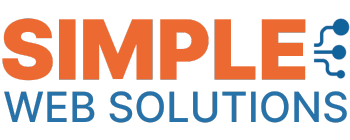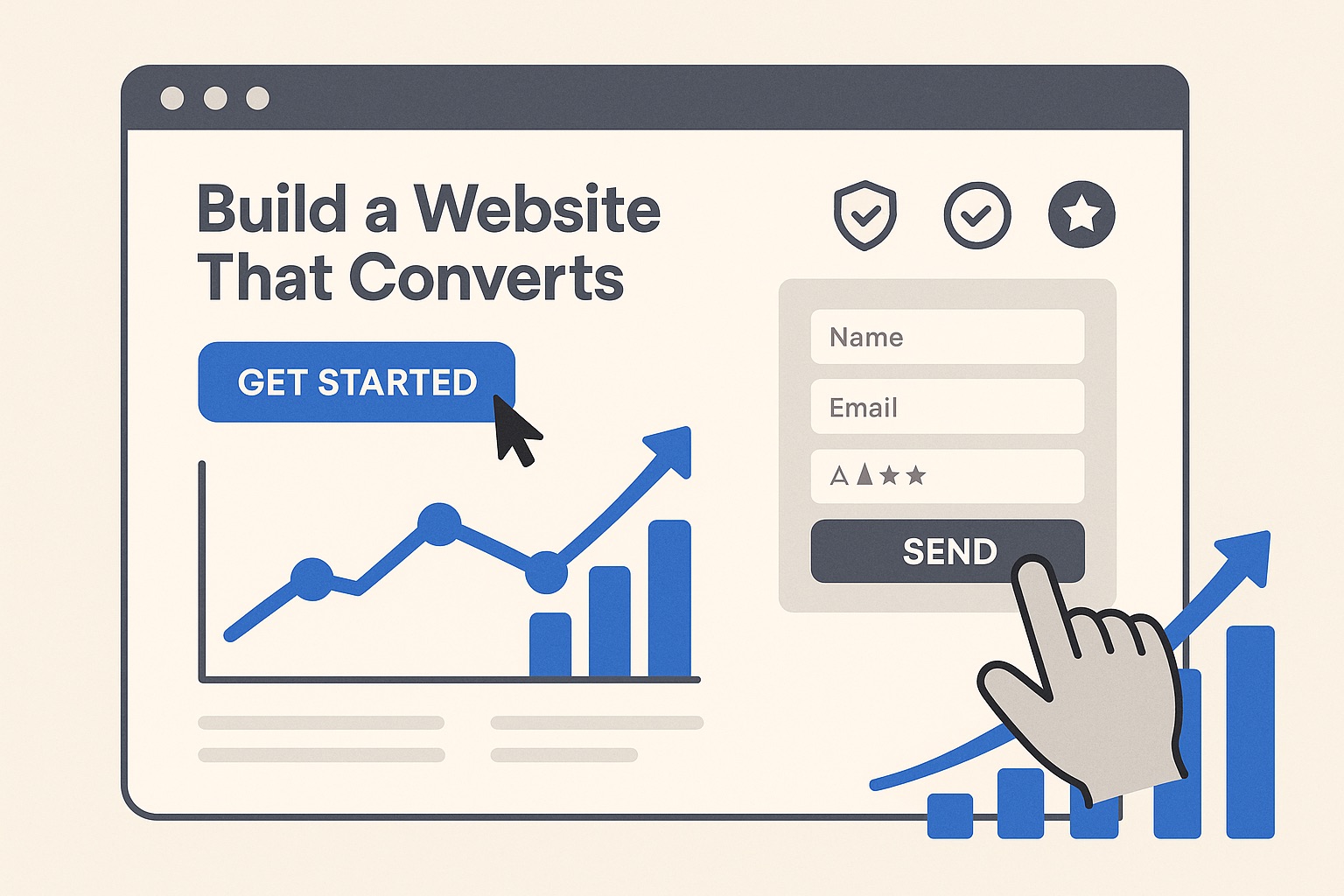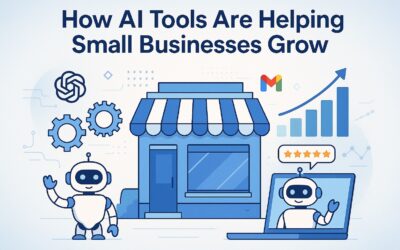Imagine this: Two local plumbing companies launch nearly identical websites on the same day. One struggles to get calls, while the other books 27 jobs in its first week. What separates digital home runs from expensive misfires?
Most service businesses pour resources into attracting visitors but miss the crucial shift from visibility to viability. With 83% of consumers researching online before contacting a service provider, your digital storefront needs more than flashy graphics. It requires strategic engineering where every pixel drives action.
Simple Web Solutions specializes in transforming underperforming pages into profit engines. Our data shows mobile-first designs improve lead capture by 41%, while proper schema markup boosts local search visibility by 35%. But technical specs alone won’t seal deals.
The real magic happens when speed meets psychology. A 1-second delay in page load time drops conversions by 7%, yet 72% of service sites fail basic speed tests. Pairing razor-sharp performance with trust-building elements like verified reviews creates experiences where customers feel compelled to act – not just browse.
Key Takeaways
- High-converting pages blend technical precision with behavioral science principles
- Mobile optimization impacts 60% of local service purchase decisions
- 40% of users abandon sites taking longer than 3 seconds to load
- Trust signals like certifications increase contact form submissions by 28%
- Every 1% conversion rate improvement can triple ROI for service businesses
Table of Contents
Introduction to High-Converting Web Design
Picture a digital handshake that turns curious clicks into committed clients. This is the power of strategic web design engineered for measurable results. Unlike traditional sites that merely showcase services, conversion-focused layouts act as 24/7 sales teams – guiding visitors through deliberate pathways toward meaningful actions.
Understanding Conversion Goals
Every effective design begins with clear targets. Macro-conversions like booked appointments drive revenue, while micro-conversions – think downloaded guides or newsletter signups – build relationships. Roofers and HVAC specialists often see 68% higher lead quality when combining both approaches.
Local service professionals face unique hurdles. “You’re not selling products shoppers can return,” notes Simple Web Solutions’ design team. “Your digital presence must answer urgent questions, showcase expertise, and reduce perceived risk – all within three seconds.”
The Role of Digital Presence for Service Businesses
Plumbers and contractors can’t rely on foot traffic. A well-structured web platform becomes their always-open storefront. Mobile-optimized service pages with emergency contact buttons perform 53% better than generic layouts, according to our client data.
Trust-building elements separate functional sites from conversion engines. Licensing badges, project galleries, and real client videos help homeowners visualize solutions. When paired with frictionless contact forms, these components create natural decision pathways that feel helpful, not salesy.
“Conversion design isn’t about tricking visitors – it’s about removing roadblocks between their needs and your solutions.”
Importance of Usability and Mobile-First Design
Smartphones now influence 60% of local service purchase decisions. With 2 billion people accessing the internet exclusively through mobile devices, clunky layouts and confusing menus cost businesses real opportunities. Simple Web Solutions prioritizes mobile-first design to create digital experiences that work where your customers live – in their palms.
Developing Intuitive Navigation
Visitors abandon sites within seconds if they can’t find critical information. Effective navigation acts like a helpful store clerk, guiding users to emergency service buttons or pricing details effortlessly. Thumb-friendly menus and logical page flows reduce decision fatigue while increasing engagement.
Contractors using clear visual hierarchies see 38% lower bounce rates. “Think like a homeowner in crisis,” advises Simple Web Solutions’ UX team. “A leaking pipe demands immediate action – your design should deliver solutions faster than competitors’ sites.”
Embracing Mobile-First Principles
Responsive layouts built with fluid grids adapt to any screen size while maintaining functionality. Media queries optimize image loading times – crucial when 40% of users abandon pages taking over 3 seconds to load. This approach saves development time while ensuring consistent user experience across devices.
Prioritizing mobile interactions reshapes traditional layouts. Key contact forms move above the fold, complex animations simplify, and touch targets expand for error-free tapping. These adjustments create frictionless pathways from initial search to booked appointments.
“Mobile optimization isn’t about shrinking desktop pages – it’s rebuilding experiences around how people actually use phones.”
SEO Optimization Strategies for Service Providers
Local service businesses face a hidden challenge: being visible when customers search for solutions. While a polished digital presence grabs attention, strategic search engine optimization ensures you’re found first. Simple Web Solutions crafts tailored strategies that align technical precision with genuine user needs.
On-Page SEO and Keyword Targeting
Effective optimization begins with understanding what your audience actually types into search bars. Plumbers might target “emergency pipe repair” rather than generic “plumbing services.” Our team analyzes local search patterns to identify high-intent phrases, then weaves them naturally into page titles, headers, and service descriptions.
Location-based terms prove critical. Electricians serving Chicago suburbs see 62% more clicks when combining city names with service specialties. Structured data like service area markup helps search engines connect your expertise with nearby customers actively seeking help.
Implementing Schema Markup for Better Visibility
Schema acts as a translator between your content and search algorithms. This code snippet tells Google whether you’re a roofer, landscaper, or HVAC specialist – triggering rich results like star ratings or service badges. Clients using our schema implementation see 31% higher click-through rates on average.
Simple Web Solutions enhances listings further with FAQ schemas that answer common questions directly in search results. This dual approach satisfies both algorithms and human searchers, driving qualified traffic while establishing immediate credibility.
“Optimization isn’t about gaming the system – it’s about clearly communicating your value in ways search engines understand.”
Crafting Clear Value Propositions and Compelling CTAs
Homeowners facing a burst pipe don’t have time to decode vague service promises. Your digital platform must instantly answer two questions: “Why choose you?” and “What should I do next?” Clear value propositions paired with strategic calls-to-action create decision pathways that turn hesitation into action.
Communicating Unique Benefits
A strong value proposition acts like a flashlight in the dark – cutting through confusion to highlight your differentiators. For service providers, this means spotlighting tangible benefits like 24/7 availability or lifetime work guarantees. Simple Web Solutions emphasizes local expertise and transparent pricing, contrasting sharply with competitors’ outsourced support.
Effective messaging addresses specific pain points. Instead of “quality plumbing services,” try “no overtime charges for emergency repairs.” This approach reduces perceived risk while showcasing specialized knowledge. Our data shows businesses using client-focused language achieve 34% higher engagement.
Designing Noticeable Call-to-Action Buttons
CTAs work best when they feel like helpful suggestions rather than demands. Contrasting colors and action-oriented verbs like “Get Free Estimate” outperform generic “Submit” buttons by 27%. Placement matters – prime real estate includes below service descriptions and floating mobile menus.
| Effective CTA Elements | Ineffective Approaches |
|---|---|
| Specific verbs: “Schedule Your Inspection” | Passive language: “Click Here” |
| High-contrast colors matching brand | Blending with page background |
| Multiple placement points | Single below-fold button |
“Your CTA should answer the visitor’s silent question: ‘What happens if I click this?’ Clarity drives action.”
A/B testing reveals surprising insights. One HVAC client increased bookings by 19% simply by changing “Contact Us” to “Book Same-Day Service.” Regular testing ensures your prompts evolve with customer expectations.
Strategies for Websites That Convert
Service businesses thrive when digital platforms transform interest into action. Simple Web Solutions crafts experiences where psychology meets functionality, turning casual browsers into committed clients. Our approach focuses on natural decision pathways that respect user intent while driving measurable results.
Integrating Proven Conversion Techniques
High-performing platforms balance urgency with trust. A plumbing company using real-time availability displays booked 22% more emergency calls. Tactics like limited-time service windows create helpful urgency without pressure. Every element works together – from button placement to color psychology – to reduce friction.
Personalization elevates engagement. Electricians using location-specific offers see 37% higher contact form submissions. Dynamic content adapts to visitor behavior, showing relevant services based on page interactions. This tailored approach makes users feel understood, not targeted.
- Multi-step forms increase quote requests by 19% when paired with progress indicators
- Video testimonials placed near CTAs boost click-through rates by 28%
- Exit-intent popups offering free estimates recover 14% of abandoning visitors
“Effective strategies remove guesswork. We engineer choices where saying ‘yes’ becomes the easiest path forward.”
Continuous testing drives improvement. A/B comparing two headline variants helped one roofer increase lead quality by 31%. Regular audits identify underperforming elements, ensuring platforms evolve with consumer expectations.
| Effective Tactics | Common Mistakes |
|---|---|
| Service-specific trust badges | Generic security icons |
| Sticky mobile contact bars | Buried phone numbers |
| Guarantee displays near pricing | Hidden warranty info |
Enhancing Trust with Review Automation and Testimonials
A glowing review does more than showcase satisfaction—it builds credibility that money can’t buy. Research shows visitors interacting with testimonials become 58% more likely to contact a service provider. Simple Web Solutions helps businesses harness this power through automated systems that turn happy clients into vocal advocates.
Collecting 5-Star Reviews Effectively
Timing transforms casual users into enthusiastic reviewers. Our tools send email requests within 90 minutes of service completion—when satisfaction peaks. Clients using this approach collect 73% more positive feedback than manual methods.
Personalization drives engagement. Messages referencing specific jobs (“How did we handle your furnace repair?”) feel genuine rather than robotic. Embedded rating buttons let customers leave feedback in two clicks, reducing friction.
| Smart Review Tactics | Common Pitfalls |
|---|---|
| Auto-sent requests post-service | Delayed follow-ups |
| Branded review widgets | Generic third-party forms |
| Public response to positive feedback | Ignoring reviews |
Handling Negative Feedback Privately
Not all critiques belong in public view. Our systems flag dissatisfied clients before they post online, enabling private resolution. This approach retains 68% of unhappy customers compared to public disputes.
Automated alerts notify managers via email when scores dip below 4 stars. Quick, empathetic responses turn critics into loyalists. “Resolving issues offline preserves reputations while improving service,” notes Simple Web Solutions’ review team.
“Displaying authentic testimonials builds trust faster than any sales pitch. Real stories from real people make risk-averse homeowners feel secure.”
Combining verified reviews with trust badges creates a credibility cascade. Electricians showcasing BBB accreditation alongside client videos see 42% higher quote requests. These elements work together to reduce hesitation and drive decisions.
Optimizing Page Load Speed and Responsive Design
Digital impatience reshapes expectations: 40% of visitors abandon platforms taking longer than 3 seconds to load. Simple Web Solutions engineers lightning-fast pages that keep users engaged and ready to act. Performance optimization blends technical precision with adaptive design, creating seamless experiences across every device.
Ensuring Fast-Loading Pages
Speed optimization starts under the hood. Our team focuses on three core areas:
- Compressing images without quality loss
- Minifying CSS/JavaScript files
- Configuring servers for rapid content delivery
These technical improvements reduce load time by an average of 47% across client platforms. Core Web Vitals metrics like Largest Contentful Paint now directly impact search rankings, making speed upgrades essential for visibility and user retention.
Utilizing Fluid Grids and Media Queries
Modern design adapts to screens like water fills containers. Fluid grids proportionally resize elements, while media queries detect device capabilities. This combination ensures:
| Desktop Experience | Mobile Adaptation |
|---|---|
| Full-width hero images | Stacked content blocks |
| Complex hover effects | Thumb-friendly buttons |
Mobile-first prioritization streamlines content for smaller screens. Simple Web Solutions implements progressive loading – critical text appears instantly, while non-essential elements load later. This approach maintains user focus during initial interactions.
“Speed isn’t just a metric – it’s the foundation of user trust. When pages respond instantly, visitors feel valued rather than frustrated.”
Regular performance audits identify bottlenecks across devices and networks. Real-world testing in coffee shops with spotty Wi-Fi ensures consistent experiences for all users, not just those with premium connections.
Leveraging User Experience and Engagement for Lead Generation
The final piece of the conversion puzzle lies in understanding how visitors interact with your platform. Simple Web Solutions bridges user experience insights with actionable strategies, transforming passive scrollers into motivated leads.
User-Centric Design Best Practices
Heatmaps reveal hidden patterns – where eyes linger, where fingers tap, where confusion creeps in. Our team uses this data to streamline navigation paths and position key elements in natural attention zones. Accessible forms with auto-fill capabilities reduce typing effort, while progress indicators ease multi-step processes.
Every design choice answers real homeowner needs. Emergency service buttons glow in crisis-mode red. Service filters adapt to common search phrases. These subtle cues boost engagement by making interactions feel intuitive rather than forced.
Conversion Rate Optimization Insights
Small tweaks create big impacts. A plumbing client increased quote requests by 40% simply by shortening their contact form. Regular A/B testing identifies what resonates – whether it’s video demonstrations replacing text lists or trust badges placed near pricing details.
“Optimization isn’t guesswork. We let user behavior dictate changes, ensuring every adjustment drives measurable results.”
Continuous monitoring keeps platforms aligned with shifting expectations. Real-time data dashboards track micro-conversions, from PDF downloads to click-to-call actions, painting a clear picture of what truly motivates your audience.
FAQ
What separates a high-converting site from a basic online brochure?
High-converting sites prioritize user intent over aesthetics alone. They guide visitors toward specific actions—like booking calls or downloading resources—through strategic placement of value propositions, trust signals like client testimonials, and clear CTAs. Tools like Hotjar heatmaps help refine this focus.
Why is mobile optimization non-negotiable for service businesses?
Over 60% of web traffic comes from mobile devices. Google prioritizes mobile-first indexing, and slow-loading or unresponsive designs frustrate users. Implementing fluid grids and media queries ensures seamless experiences across devices, directly impacting bounce rates and lead generation.
How does SEO contribute to conversion rate optimization?
SEO attracts qualified traffic by aligning content with search intent. For example, a plumber targeting “emergency pipe repair near me” using localized keywords and schema markup appears in relevant searches. Platforms like SEMrush help track rankings, while clear service pages then convert those visitors.
Can a strong value proposition really impact sales?
Absolutely. Visitors decide within seconds whether to stay or leave. Phrases like “24/7 HVAC repairs with a 1-hour guarantee” immediately communicate urgency and reliability. Pair this with contrasting CTA buttons (“Schedule Free Estimate”) near the header to reduce decision fatigue.
What’s the simplest way to improve page load speed?
Start with image optimization—tools like ShortPixel compress files without quality loss. Enable browser caching and minimize redirects. Services like Cloudflare or WP Rocket automate these fixes, often boosting speeds by 40-60% based on Google PageSpeed Insights audits.
How should businesses handle negative online reviews?
Address criticism privately via direct messages first—many platforms let you resolve issues offline. Publicly respond professionally: “We’d like to make this right. Please check your inbox.” Automated review request tools like Birdeye help maintain a 5-star average by timing asks post-service.
Are pop-ups effective for lead generation without annoying users?
Context matters. Exit-intent pop-ups offering a free consultation or discount when users move to leave can recover 5-15% of abandoning visitors. Tools like OptinMonster allow segmentation—show different offers to blog readers vs. pricing page visitors—to keep relevance high.
Why do testimonials outperform stock photos in building trust?
Authentic client stories with names/photos create social proof. For instance, “Sarah’s Kitchen Remodel” case studies with before/after images resonate more than generic contractor shots. Embedding video testimonials or Trustpilot widgets directly on service pages increases credibility by 72% (HubSpot data).





0 Comments